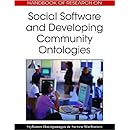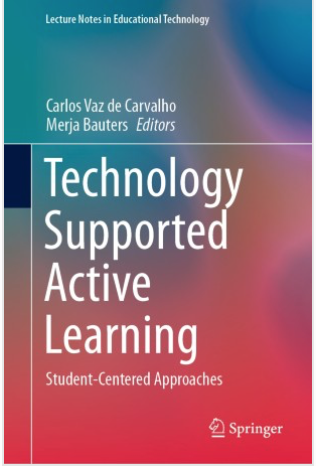
Self-Organization and the Semiotics of Evolutionary Systems
December 22, 2006From
Selected Self-Organization and the Semiotics of Evolutionary Systems
LUIS M. ROCHA
In: Evolutionary Systems: Biological and Epistemological Perspectives on Selection and Self-Organization. S.Salthe, G. Van de Vijver, and M. Delpos (eds.). Kluwer Academic Publishers, pp. 341-358, 1998.
http://informatics.indiana.edu/rocha/ises.html
Heinz von Foerster [1965, 1969, 1977] equated the ability of an organization to classify its environment with the notion of eigenbehavior. He postulated the existence of some stable structures (eigenvalues) which are maintained in the operations of an organization’s dynamics.
Ontologically, Eigenvalues and objects, and likewise, ontogenetically, stable behavior and the manifestation of a subject’s ‘grasp’ of an object cannot be distinguished.” [von Foerster, 1977, page 280].
Eigenbehavior is thus used to define the behavior of autonomous, cognitive systems, which through the closure (self-referential recursion) of the sensory-motor interactions in their nervous systems, give rise to perceptual regularities as objects [Varela, 1979, chapter 13].
Eigenvalues are discrete representations of observables maintained by the successive cognitive operations of a cognitive agent.
Any system, cognitive or biological, which is able to relate internally, self-organized, stable structures (eigenvalues) to constant aspects of its own interaction with an environment can be said to observe eigenbehavior.
Such systems are defined as organizationally closed because their stable internal states can only defined in terms of the overall dynamic structure that supports them. Organizationally closed systems are also informationally open [Pask, 1992], since they have the ability to classify their constructed environment in what might be referred to as emergent representation.
The crux of the constructivist position: in the theory of organizationally closed systems, not all possible distinctions in some environment can be “grasped” by the autonomous system: it can only classify those aspects of its environment/sensory-motor/cognitive interaction which result in the maintenance of some internally stable state or attractor (eigenvalue).In other words, not everything “out there” is accessible; only those things that a particular physiology can construct with the stabilities of its own dynamics are.
Cognitive science used to be traditionally concerned solely with those aspects of cognitive representation which can be described as symbolic. In other words, it was concerned with the semantic relation between cognitive categories and their environmental counterparts through some direct representational relation (intentionalty), without taking into account any sort of material or internal organizational constraints: real-world categories directly represented by discrete symbols which could be freely manipulated.
The connectionist, emergent, or self- organizing paradigm: cognitive systems are defined as those systems capable of self-organizing their components into discrete basins of attraction used to discriminate the environment they are able to construct.Self-organization is the spontaneous formation of well organized structures, patterns, or behaviors, from random initial conditions. The systems used to study this phenomenon are referred to as dynamical systems: state-determined systems. They possess a large number of elements or variables, and thus very large state spaces. However, when started with some initial conditions they tend to converge to small areas of this space (attractor basins) which can be interpreted as a form of self-organization.
A given dynamic system is always bound to the complexity its attractor landscape allows.
Foerster formalized the idea that memory can be observed in systems which are able to change their own structure and therefore its dynamics and attractor behavior. Today, we name this kind of memory distributed, and the kind of models of memory so attained as connectionist.
For a self-organizing system to be informationally open, that is, for it to be able to classify its own interaction with an environment, it must be able to change its structure, and subsequently its attractor basins, explicitly or implicitly.
Those self-organizing systems which are able to perform the task are thus externally selected by the environment to which they are structurally coupled.
This form of situated, embodied, self-organization can be referred to as distributed memory selected self-organization.
Eigenvalues or attractors represent the building blocks of any system capable of discriminating its environment through some thus embodied construction. However, eigenbehavior (emergent representation) and its variety increase needs a structural coupling of these eigenvalues with some externally selective environment.
Medina-Martins, Pedro R. and Luis Rocha [1992].”The in and the out: an evolutionary approach.” In: Cybernetics and Systems Research ’92. Robert Trappl. World Scientific Press. pp 681-689.
Maturana, H., and F. Varela [1987]. The Tree of Knowledge. New Science Library
von Foerster, Heinz [1960].”On self-organizing systems and their environments.” In: Self-Organizing Systems. M.C. Yovits and S. Cameron. Pergamon Press, pp. 31-50.
von Foerster, Heinz [1965].”Memory Without Record.” In: Anatomy of Memory. D.P. Kimble (Ed.). Science and Behavior Books. pp. 388-433.
von Foerster, Heinz [1969].”What is memory that it may have hindsight and foresight as well?.” In: The Future of The Brain Sciences. Samuel Bogoch (Ed.). Plenum Press. pp. 19-65 and 89-95.
von Foerster, Heinz [1977].”Objects: tokens for (eigen-)behaviors.” In: Hommage a Jean Piaget: Epistemologie Genetique et Equilibration. B. Inhelder, R. Gracia, and J. Voneche (Eds). Delachaux et Niestel.
Varela, Francisco [1979]. Principles of Biological Autonomy. Elsevier North Holland.
Varela, Francisco, Evan Thompson, and Eleanor Rosch [1991]. The Embodied. MIT Press.










Eigenbehavior is thus used to define the behavior of autonomous, cognitive systems, which through the closure (self-referential recursion) of the sensory-motor interactions in their nervous systems, give rise to perceptual regularities as objects [Varela, 1979, chapter 13].
The crux of the constructivist position: in the theory of organizationally closed systems, not all possible distinctions in some environment can be “grasped” by the autonomous system: it can only classify those aspects of its environment/sensory-motor/cognitive interaction which result in the maintenance of some internally stable state or attractor (eigenvalue).In other words, not everything “out there” is accessible; only those things that a particular physiology can construct with the stabilities of its own dynamics are.
How it is related with the affordances idea?